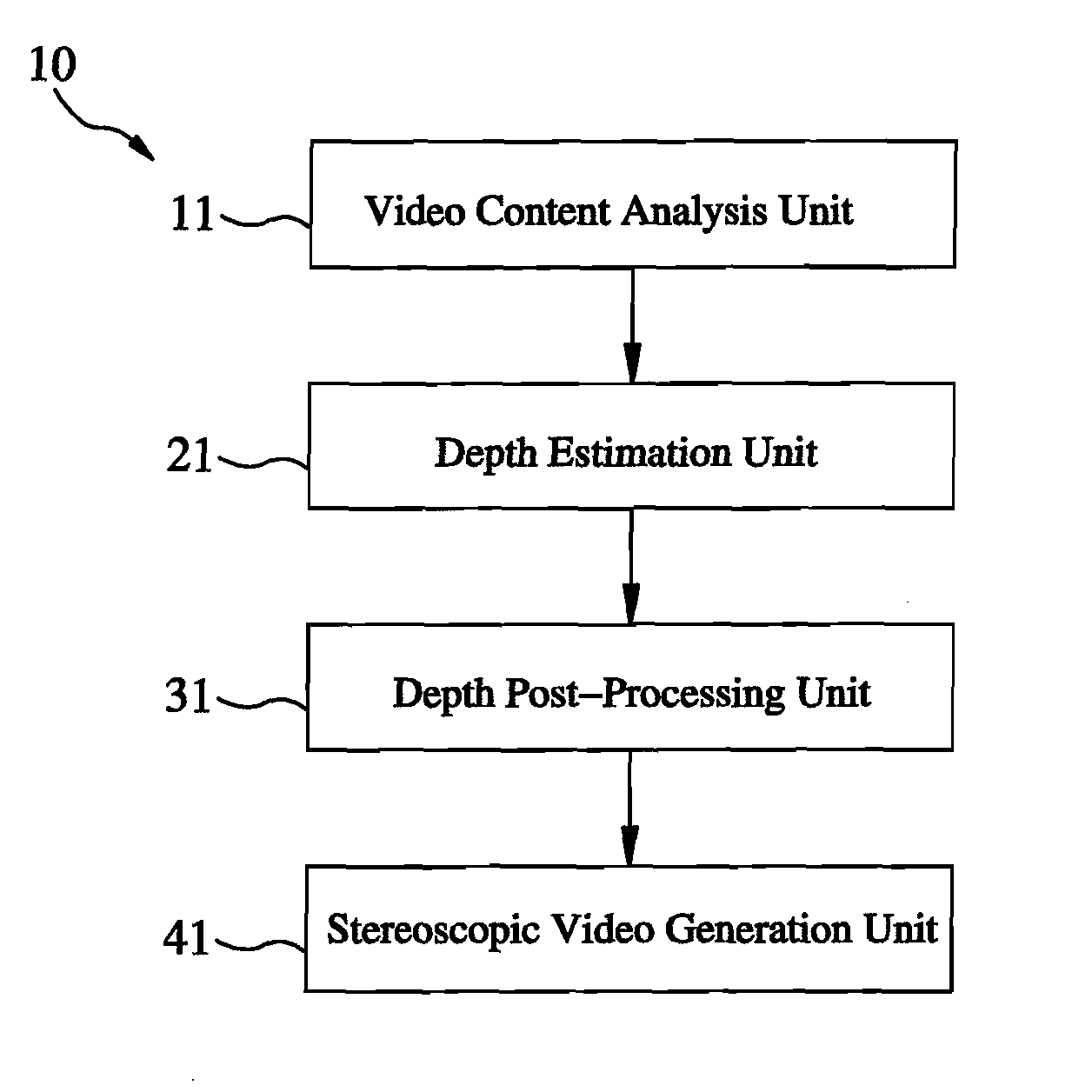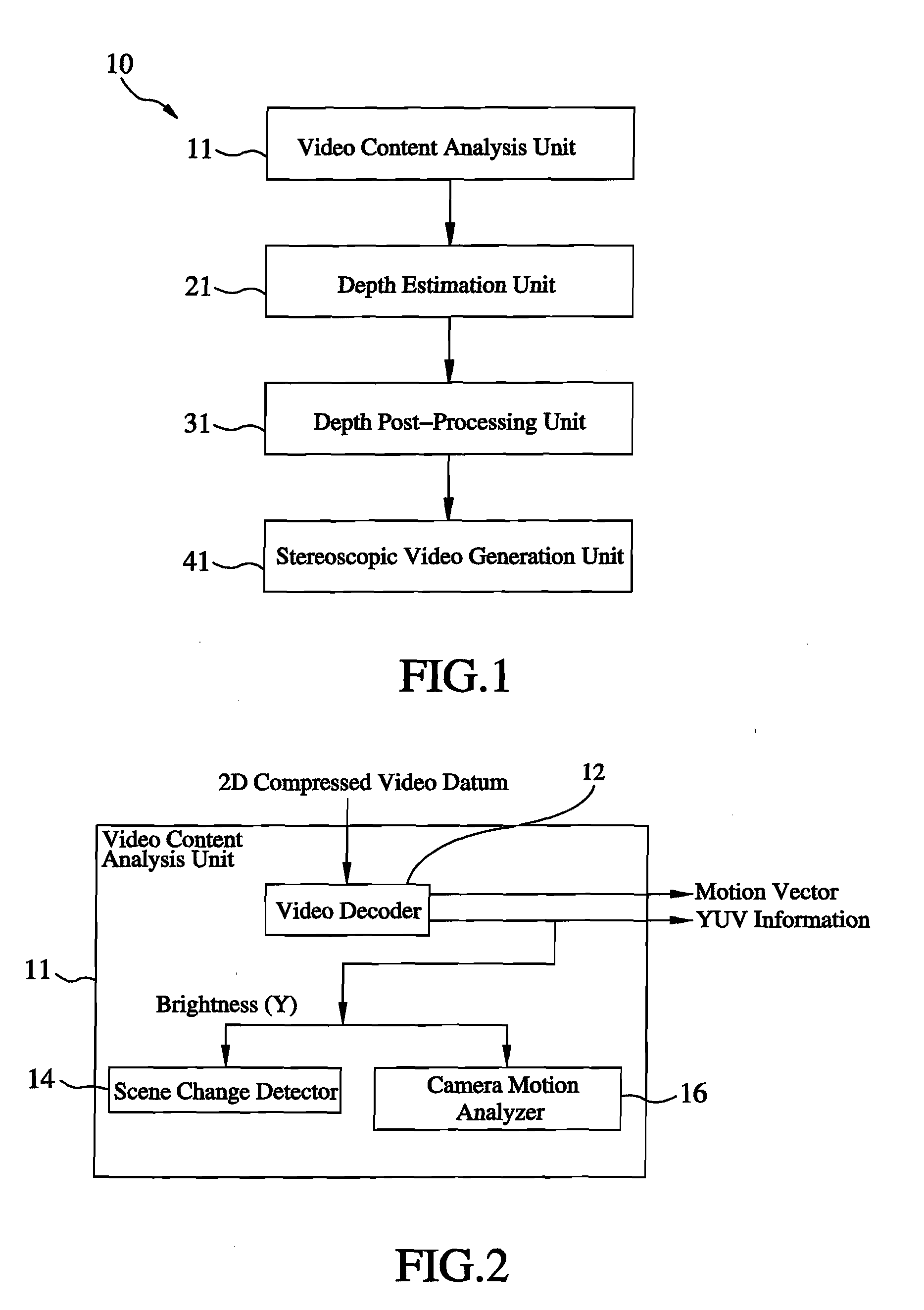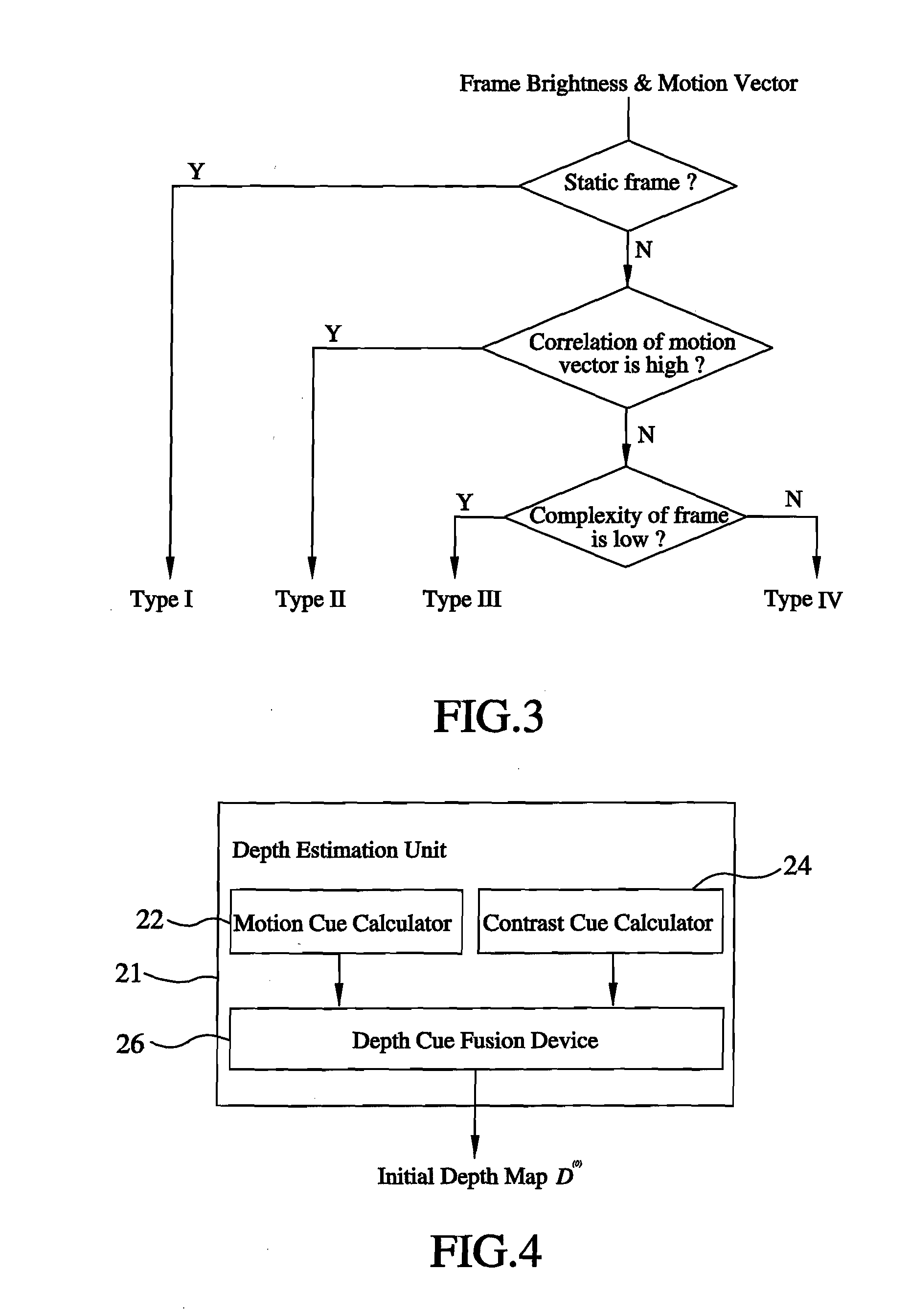System for converting 2d video into 3D video
a technology of video and 3d, applied in the field of image processing technology, can solve the problems of not being applicable to pluralistic household or commercial video, affecting the quality of video, and affecting etc., to enhance the stereoscopic perception of captions, enhance the quality of video depth, and enhance the depth continuity
- Summary
- Abstract
- Description
- Claims
- Application Information
AI Technical Summary
Benefits of technology
Problems solved by technology
Method used
Image
Examples
Embodiment Construction
[0018]Referring to FIG. 1, a system 10 for converting 2D video into 3D video in accordance with a preferred embodiment of the present invention is composed of a video content analysis unit 11, a depth estimation unit 21, a depth post-processing unit 31, and a stereoscopic video generation unit 41. The detailed descriptions and operations of these elements as well as their interrelations are recited in the respective paragraphs as follows.
[0019]The video content analysis unit 11 can analyze 2D video datum and extract useful information including motion and color from the 2D video datum for depth estimation. In this embodiment, as shown in FIG. 2, the video content analysis unit 11 includes a video decoder 12, a scene change detector 14, and a camera motion analyzer 16. Because MPEG-2 is a currently very common compression standard, it is adopted as an example for video compression in this embodiment and the video decoder 12 is also based on MPEG-2 as an example. The other compression...
PUM
 Login to View More
Login to View More Abstract
Description
Claims
Application Information
 Login to View More
Login to View More - R&D
- Intellectual Property
- Life Sciences
- Materials
- Tech Scout
- Unparalleled Data Quality
- Higher Quality Content
- 60% Fewer Hallucinations
Browse by: Latest US Patents, China's latest patents, Technical Efficacy Thesaurus, Application Domain, Technology Topic, Popular Technical Reports.
© 2025 PatSnap. All rights reserved.Legal|Privacy policy|Modern Slavery Act Transparency Statement|Sitemap|About US| Contact US: help@patsnap.com



